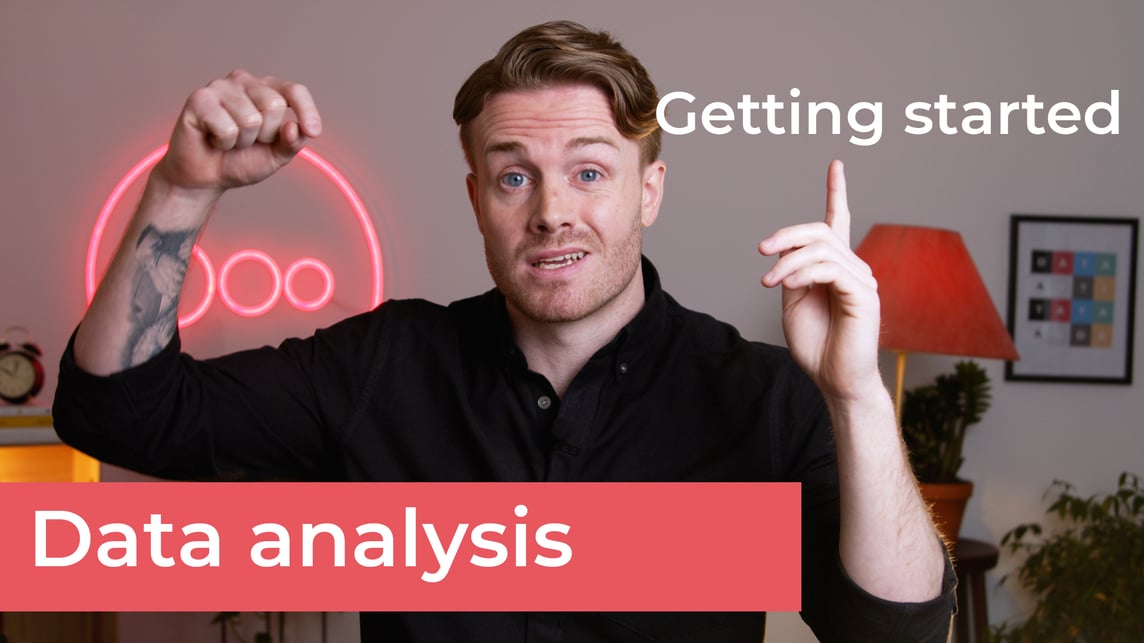
No matter how big or small your company is, the best way to win over your customer is to approach them across different digital platforms throughout their buying journey.
To do that, you need to know what your core audience looks like, where they spend their time online, how effective different channels are for targeting them, and how you should be dividing your budget accordingly.
That's where data analysis comes in. More importantly, that's where cross-channel marketing analytics holds the keys to your future success.
In this handy guide, we'll discuss what cross-channel analytics is and easy ways to get started with understanding your data.
What is cross-channel marketing?
It's not uncommon for small marketing teams to blast out simple social media campaigns on the first of the month, scheduling the same content across all channels. There might be a few changes to the size of the video or image and a few tweaks to headers here and there, but for the most part, you'll often see the same content copied and pasted across multiple platforms.
But while various channels are being used, this isn't cross-channel marketing.
Cross-channel marketing is much more than the actual content created. It refers to using different marketing channels in tandem to achieve a single goal (for example, an online purchase).
You'll use several platforms to meet, inform, and inspire your audience. You'll create a holistic experience through the buying journey, and build trust and familiarity along the way. This trust and familiarity then lead to a purchase when targeted with the right product campaign.
Cross-channel marketing isn't a new concept, either. As far back as 2018, research by Gartner found that businesses using four or more digital marketing channels within a single campaign were more likely to succeed and outperform single and two-channel strategies by a whopping 300%.
Cross-channel and multi-channel: What's the difference?
Multi-channel marketing paved the way for cross-channel marketing. Using multiple channels to improve marketing performance isn't new; however, it's the way these channels are being used that has evolved and improved. With multi-channel, each channel is managed and analyzed separately. The data doesn't cross paths. Cross-channel marketing uses a combined approach in which all channels are integrated into one marketing strategy.
What is cross-channel analytics?
A 2023 study found that 61% of marketers believe that the "accurate measurement of performance" is the most important part of a successful marketing strategy.
Enter cross-channel analytics
Depending on where your business is in its development, it's likely you're using some level of cross-channel marketing. But what about cross-channel analytics?
Unsurprisingly, this term refers to the processing of marketing data from your cross-channel strategy to gain insights about the overall performance of your campaign. Using advanced analytics tools, you can perform cross-channel marketing analysis taking data and metrics from all the different marketing platforms you're using.
This allows marketers to gain a fuller, more accurate picture of how their digital marketing strategy is going. Cross-channel marketing analysis incorporates website SEO, social media marketing (paid and organic), PPC campaigns, and even email marketing data.
Why use cross-channel analytics?
It sounds helpful, but why is cross-channel analytics so important to the success of your marketing campaigns?
Revenue attribution is more accurate
Think back to your TV package at home. Do you always watch the same channel, or do you flick between channels depending on the time, the day, or the mood you're in?
It's the same for your customers. Very rarely do any of us do a quick product search on Google and instantly buy something from the top result. Instead, we go on a buying journey. For example, a simple customer's journey looks something like this:
-
A potential customer becomes aware of your business
-
They then take a look at what your business is and what you offer
-
If your product is a match, they'll check out some reviews and probably some of your competitors
-
Finally, they'll decide to buy from you or someone else
During this customer journey, your business has the opportunity to reach potential customers at different touchpoints to continuously keep your business at the forefront of their minds. In fact, a Google survey found that on desktops, customers interact with an average of 3.4 channels or touchpoints before buying your product.
Someone might discover your business on an Instagram ad and give you a follow. A few days later they watch a reel you've posted and then see the same video on TikTok at a later date. This directs them to your website to subscribe to the newsletter for a discount on their first purchase.
Later down the line, a quick Google search brings up your site, and remembering your business from before, they make a purchase with the discount code they received via email.
While it was Google that led to the purchase, the previous touchpoints certainly helped.
Which is why cross-channel marketing analysis is so important. Rather than attributing a conversion to the touchpoint that directly led to the sale, cross-channel data gives you the real picture and allows you to use multi-touch attribution to understand which touchpoints are providing the most revenue.
Data-driven decisions will shape your future marketing strategies
Cross-channel marketing analytics allows you to gain meaningful insights and answer previously unanswered questions and more 'what if' questions like:
-
Where do our banner ads garner the most leads?
-
How many people head to the site after seeing an ad/receiving an email/watching a video?
-
Which channels work to drive the most revenue?
-
What if I create an email sequence for leads from X?
-
How can we optimize our marketing budget?
Cross-channel analytics help you to find out why customers are converting so you can convert more without spending time and money in all the wrong places - ultimately helping you create a better cross-channel marketing strategy.
You'll gain a bigger and better picture of your customer
Back in the day, digital marketers would create campaigns based on their perceived target audience. But now, with the help of ad platforms, you have a boatload of information about actual customers; their likes, dislikes, and much more.
Taking all this customer data and cross-comparing consumer behavior from different channels, you can create much more accurate buying personas to help shape your strategy. So as well as questions about your marketing campaigns, your data can answer questions like:
-
What social media platforms do they like?
-
How old are they?
-
What do they do for a job?
-
What hobbies do they have?
The big 'but' in cross-channel analytics
Cross-channel marketing data is great, but there's a lot of it, which makes figuring out what's important tricky.
As raw data, you might not realize just how many channels you're looking at. Instagram alone offers three channels of data - paid ads, reels, and organic posts - each with its own metrics such as impressions or cost per view.
Analyzing and managing all these channels isn't just a full-time job. It's multiple full-time jobs. But using platforms like Funnel to collect, store, and organize your data into easy-to-digest visuals means the whole digital marketing team can work from the same performance data to truly understand their part in your business' overall digital marketing strategy.
With all the data you have at your fingertips, you can:
-
Scale your business more easily by knowing exactly where to allocate more budget
-
Provide a killer customer experience at every touchpoint by utilizing resources more effectively
-
Learn new ways to measure success that you'd never have thought of
It's scary, but it's very exciting.
Charting your cross-channel data for success
A great way to begin analyzing your data is by creating charts that make scanning the information quick and easy - perfect for marketers with a busy workload (read: all marketers).
You can use charts to track and watch how channels or cross-channel marketing campaigns are performing over time and in real time. They'll help you identify patterns or spot anomalies, too. We've highlighted three simple chart types in the video above, but let's walk through them here:
1. Time series analysis
Time-series analysis shows how your chosen metric looks over the day, week, month, or longer. It helps to find trends in the data like seasonal changes that may not have been apparent before. Of course, different metrics need to be reviewed over different periods. Only looking at the data over a short period might not work as well for one metric as it does for another.
2. Correlation analysis
As you start to become more comfortable with your data, you can create more complex hypotheses and use something like correlation analysis. Correlation analysis can show how one metric might be impacting another. For example, 'What happens to other channels when Facebook ad spend is increased?'
However, while correlation analysis can be helpful, it's important to take the results with a pinch of salt. Correlation doesn't always mean causation. If Google conversions seem to be increasing at the same rate as increasing ad spend on Facebook, other things may be at play; Facebook may not be the direct cause.
3. Comparison analysis
Comparison analysis is probably the most common cross-channel analysis that's done, answering the age-old question of all marketing analysts 'Which campaign/ad/post performed better?'
A comparison chart will compare two or more metrics, and it's something to keep in your daily marketing toolbox. These valuable insights can lead to actionable data and deeper exploration: Rather than just understanding what performed better, the next step is to understand why.
The first step to starting cross-channel analytics is to dive into the deep end and get experimenting. Using a platform like Funnel, start playing around with hypotheses and use the data you have available to answer them. You'll never make non-data-driven buying decisions ever again.
Check out our 6 tips on analyzing marketing data for more advice, or click here to download examples and information mentioned in our video!
